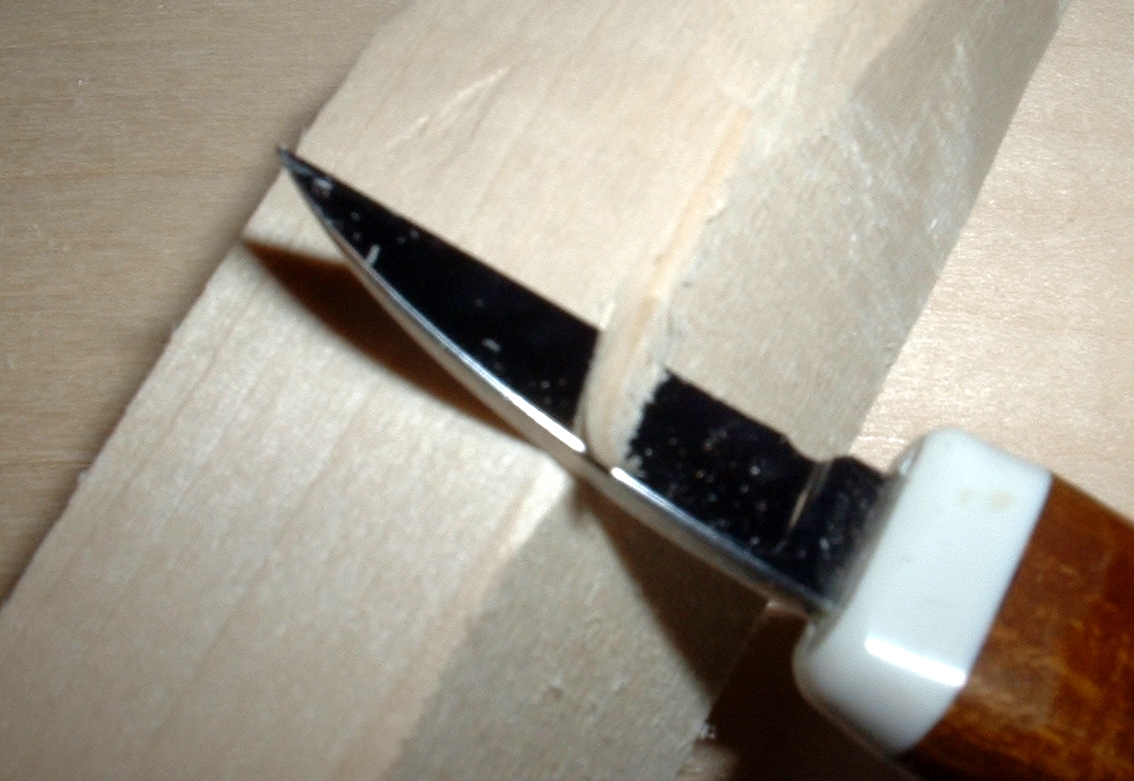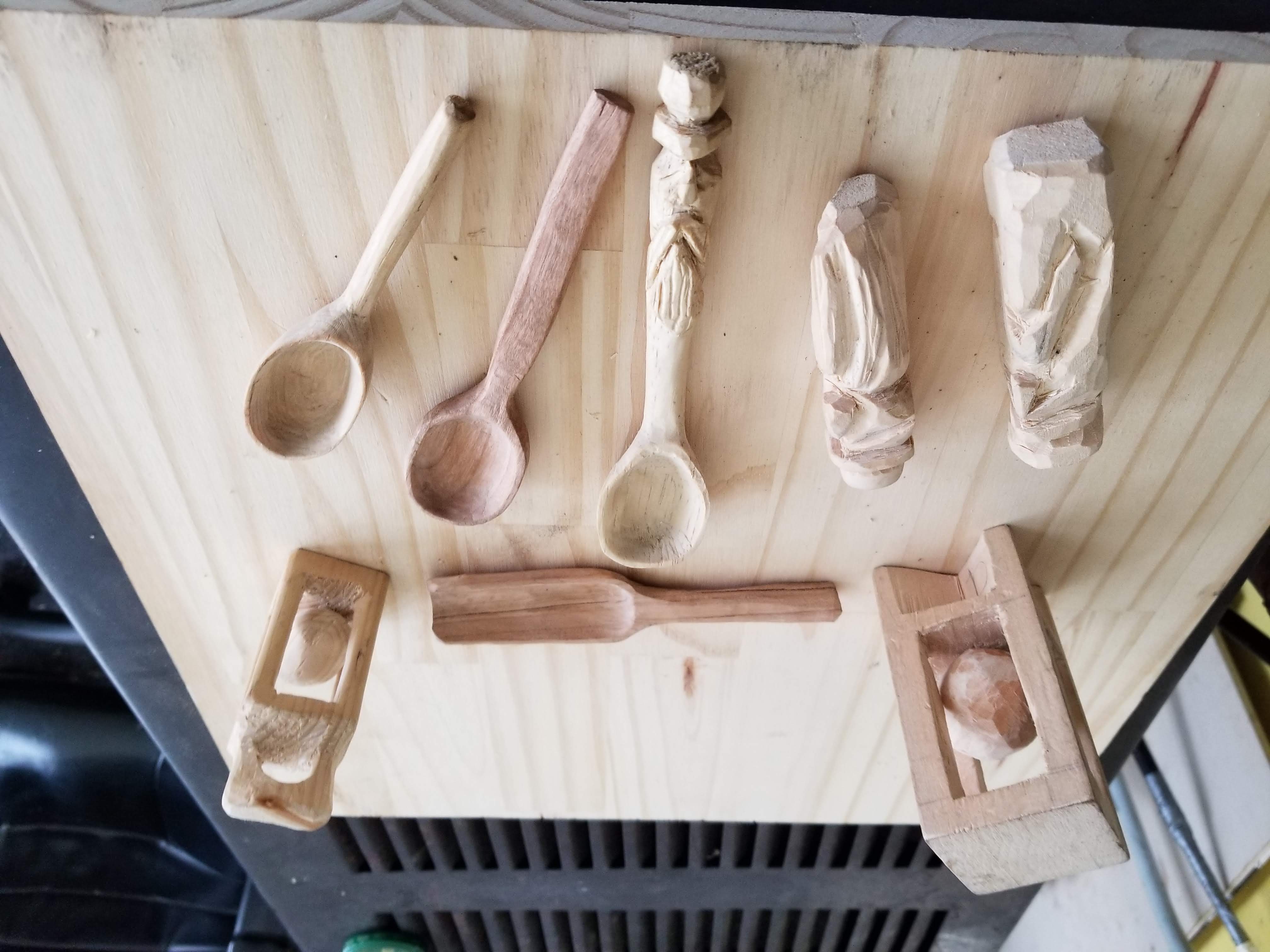Whittling on:
[Wikipedia]
[Google]
[Amazon]

 Whittling may refer either to the art of
Whittling may refer either to the art of
 Casual whittling is typically performed with a light, small-bladed knife, usually a pocket knife. Specialized whittling knives, with fixed single blades, are preferred for sculpting artistic work. They have thick handles which are easier to grip for long periods and have better leverage, allowing more precise control and pressure.
Occasionally the terms "whittling" and "carving" are used interchangeably, but they are different arts. Carving employs the use of
Casual whittling is typically performed with a light, small-bladed knife, usually a pocket knife. Specialized whittling knives, with fixed single blades, are preferred for sculpting artistic work. They have thick handles which are easier to grip for long periods and have better leverage, allowing more precise control and pressure.
Occasionally the terms "whittling" and "carving" are used interchangeably, but they are different arts. Carving employs the use of
 Whittling may refer either to the art of
Whittling may refer either to the art of carving
Carving is the act of using tools to shape something from a material by scraping away portions of that material. The technique can be applied to any material that is solid enough to hold a form even when pieces have been removed from it, and y ...
shapes out of raw wood
Wood is a structural tissue/material found as xylem in the stems and roots of trees and other woody plants. It is an organic materiala natural composite of cellulosic fibers that are strong in tension and embedded in a matrix of lignin t ...
using a knife
A knife (: knives; from Old Norse 'knife, dirk') is a tool or weapon with a cutting edge or blade, usually attached to a handle or hilt. One of the earliest tools used by humanity, knives appeared at least Stone Age, 2.5 million years ago, as e ...
or a time-occupying process of repeatedly shaving slivers from a piece of wood. It is used by many as a pastime, or as a way to make artistic creations.
Background of whittling
chisel
A chisel is a hand tool with a characteristic Wedge, wedge-shaped cutting edge on the end of its blade. A chisel is useful for carving or cutting a hard material such as woodworking, wood, lapidary, stone, or metalworking, metal.
Using a chi ...
s, gouges, with or without a mallet
A mallet is a tool used for imparting force on another object, often made of rubber or sometimes wood, that is smaller than a maul or beetle, and usually has a relatively large head.
General overview
The term is descriptive of the ...
, and often powered equipment such as lathes
A lathe () is a machine tool that rotates a workpiece about an axis of rotation to perform various operations such as cutting, sanding, knurling, drilling, deformation, facing, threading and turning, with tools that are applied to the ...
. Whittling, however, involves only the use of a knife.
In industrialized areas of the world, whittling is mainly a hobby and not an occupational activity as it was before powered wood working equipment enabled modern production.
"Splash whittling" is a historical, decorative technique in Norway using an ax to create a herringbone pattern
The herringbone pattern is an arrangement of rectangles used for floor tilings and road pavement, so named for a fancied resemblance to the bones of a fish such as a herring.
The blocks can be rectangles or parallelograms. The block edge lengt ...
.
Safety
Safety precautions include the wearing of athimble
A thimble is a small pitted cup worn on the finger that protects it from being pricked or poked by a needle while sewing. The Old English word , the ancestor of thimble, is derived from Old English , the ancestor of the English word ''thumb''.
...
on one's thumb and a cut-resistant glove on one's holding hand.
Wood types
While any type of wood can be used for whittling, there are woods which are easier to work with and whittle better than others. Softer trees such as basswood which have a smaller grain, are easier to whittle and are relatively inexpensive. Hardwoods (broadleaves) are generally more difficult to whittle than softwoods (conifers).See also
*Wood carving
Wood carving (or woodcarving) is a form of woodworking by means of a cutting tool (knife) in one hand or a chisel by two hands or with one hand on a chisel and one hand on a mallet, resulting in a wooden figure or figurine, or in the sculpture, ...
References
External links
Sculpture techniques Woodcarving Artistic techniques {{decorative-art-stub